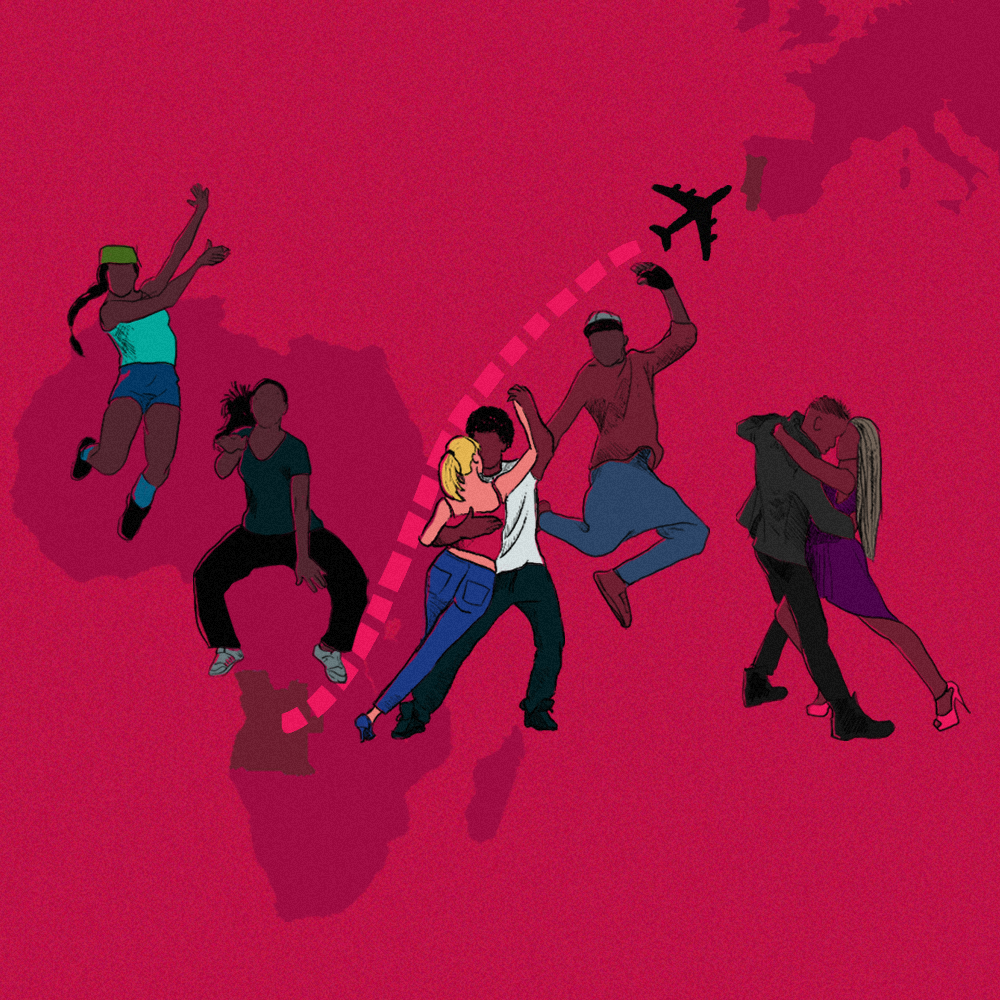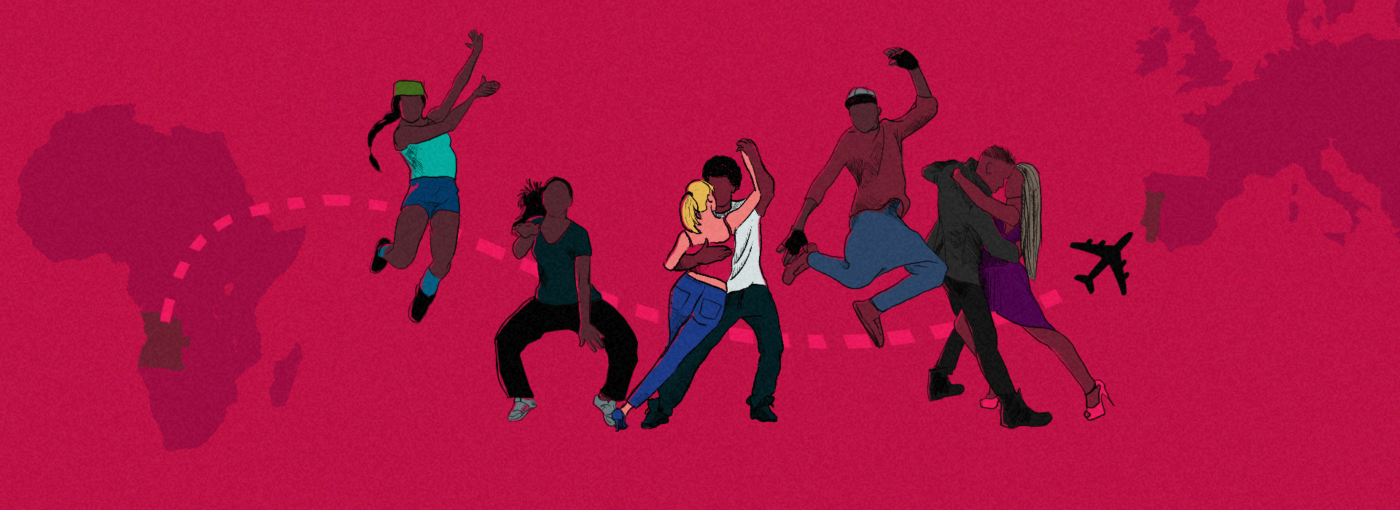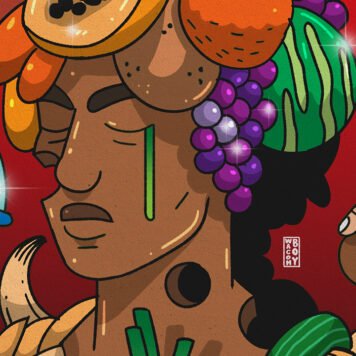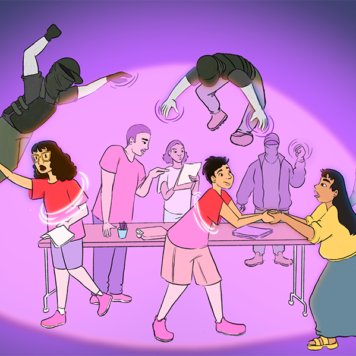Kuduro is a high-energy music and dance genre that originated in Angola during the late 1980s. The music combines African rhythms, electronic beats, and elements from hip-hop, house music, and dancehall.
When you search for Kuduro on YouTube, the first result is “Danza Kuduro” by Don Omar ft. Lucenzo, a song I recognised from the Fast Five soundtrack. Interestingly, this observation aligns with what the Angolan-born writer and musician Kalaf Epalanga discusses in Whites Can Dance Too, his first novel, referring to the song as “gringo music.” Based on my limited understanding of the genre when I was introduced to it in the book, I agree. The song seemed somewhat lacking compared to my perception of Kuduro.
Kuduro’s origins can be traced back to Angola’s periods of war and repression. Initially created as a coping mechanism and a source of positivity for the younger generation, the lyrics of kuduro songs often revolve around social issues, everyday life, partying, and celebrating Angolan cultures.
Kizomba is a sensual and romantic Angolan dance genre, combining influences from traditional Semba music with elements of Zouk, a Caribbean genre. Melodic, slow-paced, heartfelt lyrics accompany smooth, flowing movements. Watching videos of kizomba online while writing this is something a friend described as “running a hot knife through butter… smooth.”
Despite their significance for Angolans, kuduro and kizomba are often misunderstood, misrepresented and rendered invisible in global discourse.
Preserving the memory of kuduro and kizomba
Kalaf, who used to be part of the Lisbon-based collective Buraka Som Sistema, which skilfully blends techno beats with the infectious rhythms of kuduro, has experienced this. He was first confronted with the misrepresentation of Angolan culture while sitting on a panel on music and literature in Brazil.
“I realised that even though we share the same language and relatively similar culture due to the transatlantic slave trade, the African diaspora know very little about the contemporary African and Angolan cultures,” Kalaf explains. The panel led to discussions about the history of kuduro and kizomba, with someone at the event asking him to write up his knowledge into a biography.
This point was the genesis of Whites Can Dance Too. Published in June 2023, this thought-provoking release comprises three narrators and perspectives to offer a nuanced examination of immigration while documenting and preserving the cultural memory of kuduro and kizomba.
Bridging cultures and confronting immigration realities
When we chat, Kalaf is in Portugal with his wife and children – a lengthy holiday he can savour, he tells me, thanks to Germany’s generous parental leave policies. I couldn’t help but think about the possibility of Germany as a relocation spot until a sobering realisation surfaced – being from the UK, the impact of Brexit has significantly damaged my potential to do so.
Our musings around free movement set the stage perfectly for Whites Can Dance Too. Kalaf uses the history and culture of kuduro and kizomba and their engagement in the West as a springboard to talk about immigration.
As an immigrant himself, Kalaf naturally weaves personal stories into the fabric of this work. This intriguing blend of fact and fiction renders the book a story, a memoir, and even a historical text, thanks to its rich exploration of kuduro and kizomba amid Angola’s complex colonial history.
He knew he did not want this to be a strict biography, and he decided to tell a fictional story from a perspective similar to his own. He created a character, also named Kalaf, who is also a first-generation immigrant and Angolan musician.
Through this character, we experience how kuduro artists exist in Western countries, and how these dynamics have shaped the genre over the years. He sheds light on circumstances which often place the genre in a precarious state, as its original creators, who should rightfully be the stars, find themselves marginalised and extorted due to the difficulties imposed on them by restrictive immigration policies. In a scene mirroring an event that happened to Kalaf in real life, the character is detained at the border by an immigration official, hours before he is due to perform at a music festival.
Through the character of Kalaf, we gain insight into the struggle for a better life, the tensions between upholding violent systems and striving for recognition, and the solidarity amongst othered individuals forced into unfamiliar communities.
However, Kalaf makes up just one of three perspectives in the novel. Eyvind, the immigration officer, also referred to as “the Viking”, is another voice in the story. Through Eyvind’s perspective, Whites Can Dance Too delves into the inner workings of the immigration system, unearthing its darkest corners and exposing the complicity of those who perpetuate its violence. It invites readers to confront uncomfortable truths and engage with the complexities of immigration enforcement.
Eyvind grapples with his conscience as an immigration enforcer, eventually realising the harm he causes. He derives pleasure from his power and work until he confronts the consequences of his actions, leading to a sudden realisation of his wrongdoing – a realisation that came too late, and at the expense of people’s lives. While I admittedly lacked sympathy for him due to my views on law enforcement’s systemic issues, I appreciated that Kalaf addressed these systemic issues, rather than relying on the “few bad apples” narrative.
A case for Whites That Can Dance
The third and final voice we are introduced to in the book is that of Sofia, a kizomba dancer and second-generation white immigrant whose mother moved to Portugal from Angola amid the violence that erupted after Angola’s independence in 1975. Her character arc follows a quest for belonging. This is complex because, on the one hand, Kalaf speaks to the appropriation of Angolan genres, yet he uses a white woman’s perspective to tell the story of kizomba. He tells me he’s been criticised for this and even regarded as complicit in the erasure of Black people in the space.
But his choice was deliberate.“It is, unfortunately, a part of the culture,” he explains. White women dominate the space – and, as he says, “even if I disagree, this is a reality.”
Admittedly, I initially felt uneasy about learning about kizomba from the perspective of a white woman. However, as I spoke to Kalaf, I quickly realised that, in a way, Sofia’s identity mirrors that of many of us who lack Angolan cultural connections to kizomba and kuduro but still engage with and discuss them. While Sofia lacked the physical identifiers to engage with the topic, she is somewhat rooted in the culture. Aside from her ties to Angola through her mother, Sofia grew up with an Angolan stepfather who taught her about kizomba from a young age.
As you read this and I provide cultural insights into kizomba and kuduro, I must note that I am not a part of that culture. My authority and capability to educate you on these subjects could be more questionable than one might assume Sofia’s to be.
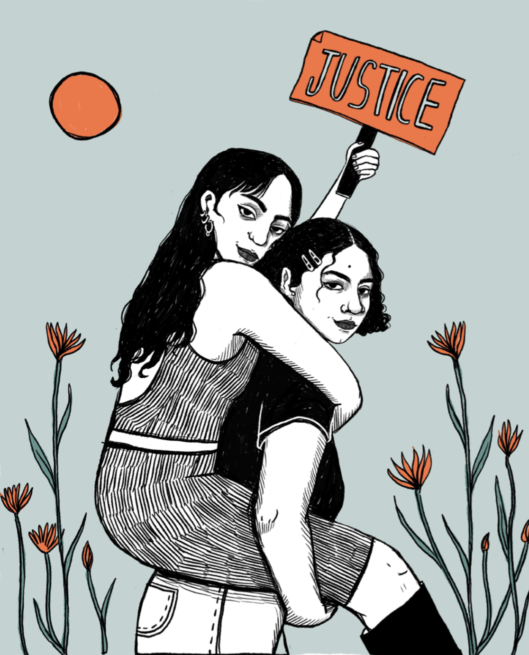
Join our mailing list
Sign up for shado's picks of the week! Dropping in your inbox every Friday, we share news from inside shado + out, plus job listings, event recommendations and actions ✊
Sign up for shado's picks of the week! Dropping in your inbox every Friday, we share news from inside shado + out, plus job listings, event recommendations and actions ✊
Therefore, while representation is important, I understood that Sofia’s character was less about representation. As a white woman in a space not originated by or for her, she exemplifies how outsiders can engage with a culture they are not directly a part of, or whose presence is contestable, with relative privilege. Kalaf uses Sofia’s character to showcase the complexity of people like her within the broader conversation on immigration, revealing the intricate dynamics of cultural immersion and contested presence – and the relative privilege afforded to those who are white.
I had initially assumed the character of Sofia was the inspiration for the title. However, this wasn’t Kalaf’s sole intention. He explains that the line Whites Can Dance Too is drawn from the Umbundu proverb, “O mundele uejia miimbu iauaba muene,” which ultimately translates into “whites also know good songs.”
Kalaf notes that the ability of proverbs to be both abstract yet profound is a way of measuring eloquence in many African languages. This is something I, as a Yoruba person, can also relate to.
So, the titular mention of white people doesn’t just refer to Sofia but reflects Angola’s colonial history and how Angolans remember it. It also acknowledges the reality of violence that white people perpetrated, while recognising that not all white people were entirely malevolent. Kalaf explains it can be used to illustrate points such as: “Do not judge a book by its cover,” “Everyone has something of value,” or my personal favourite: “No one is bad all the time, and no one is good at all times. People are people.”
The theme of ambivalence in activism has emerged as a significant aspect of my research. Exploring this ambivalence through Kalaf’s work was valuable. I am gradually accepting that ambivalence is an inherent part of our existence – we are never entirely good or bad. Embracing this reality allows us to foster a community devoid of shaming, enabling us to hold each other accountable without self-righteousness.
Blacks Can Dance Too
In the same vein, Kalaf emphasises the African community’s diversity, highlighting that “Africans do not exist as a monolith.” Kalaf provides examples of Africans who started as immigrants but have worked up to positions of power and influence and benefited from Western systems such as colonialism.
Kalaf suggests that some of us “have inherited a self-preservation mindset from the white man,” which ties us to the individualism and values of being “a part of the European family.” Unfortunately, this often leads us to make choices and take actions that undermine the liberation of our fellow Africans.
This made me think about the stance of Nigerians abroad who advocate for ‘legal’ migration, particularly through student visas, to relocate themselves and their families. Often aligning with conservative and self-preserving politics to safeguard their status and reputation in Western countries, they express their frustrations at other Nigerians using ‘illegal’ means, and urge them to pursue ‘legal’ pathways. Many of these individuals conveniently overlook that their methods to enter these countries have now been deemed illegal. Recently, the UK announced a ban on bringing family members while on a student visa. I wonder what they will say now?
It is important to understand that no one is illegal, so the idea of “legal” migration is oxymoronic and, frankly, futile. This logic often recreates problems for immigrants abroad, and encourages surveillance and inhumane immigration enforcement measures to regulate who is “legal”. Whites Can Dance Too skillfully highlights the inhumane nature of some of these immigration and law enforcement measures by weaving real-life cases, such as the tragic death of Eugene Ejike Obiora.
The novel also encourages us to reflect on the truth of our own lives and experiences. The precarity of our citizenship in foreign countries is enough proof to show that the line between ‘legal’ and ‘illegal’ is blurry.
Kalaf’s personal story serves as the foundation for Whites Can Dance Too, allowing readers to delve into its captivating narrative. As such, the novel organically weaves the history of dance and music genres into a profound exploration of immigration. In the case of Kalaf, his identity and the immigration narrative are one and the same, intertwining to create a powerful narrative.
However, this connection extends beyond Kalaf’s personal story. The intertwined history of kizomba and kuduro with the immigration narrative makes it inevitable for a story centred around these genres to delve into the complexities of immigration.
Kalaf exemplifies how art can transcend its initial purpose, becoming a powerful vehicle for storytelling and social commentary. Our conversation and exploration of his book enlightened me on the necessity for nuanced and diverse narratives concerning immigration. The urgency lies in educating society and addressing the increasing hostility and violence towards immigrants in the political landscape. Kalaf’s ability to be vulnerable and navigate these themes with complexity illuminates how personal narratives can shed light on larger societal issues.
What can you do?
- Read Whites Can Dance Too by Kalaf Epalanga
- Read Bossa Nova: The Story of the Brazilian Music That Seduced the World by Ruy Castro
- Watch Buraka Som Sistema: Off the Beaten Track, Directed by João Pedro Moreira
- Listen to the playlist inspired by Whites Can Dance Too
- Read more articles by Adebayo HERE
